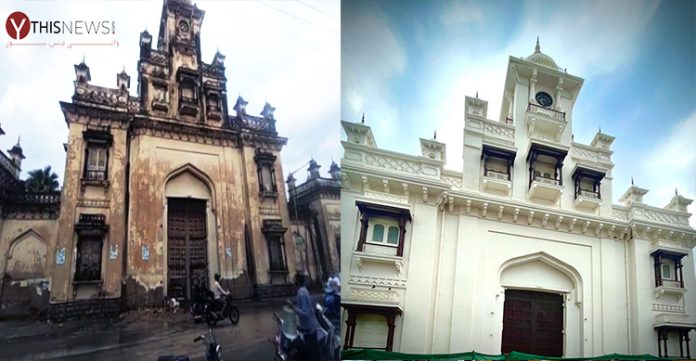According to the latest reports, the clock tower at the Chowmahalla Palace has been completely restored at the palace’s white dome. When heavy rains were reported across the city in 2020 July, a timber balcony partially collapsed.
Director of Chowmahalla Palace, G Kishan Rao, announced in an official release on Wednesday that the clock tower restoration commenced in August 2021 and took six months to complete.
Rao explained how highly-skilled masons under the supervision of conservation architect Anuradha Naik worked to stitch the unstable walls and secure the palace, while carpenters worked on carving the intricate designs on the balcony.
Highly skilled craftsmen worked under the supervision of architect Anuradha Naik to restore the building using materials such as lime, custom-made bricks, and hand-cut granite.
ALSO READ: The historic Kali Kaman in Hyderabad has been fully restored
Developmental works in Old City
A series of development works that will improve infrastructure in the Old City, preserve the city’s old-world charm, and ensure better living conditions for Hyderabad’s citizens have begun.
GHMC officials revealed that development works worth Rs 580 crores have been undertaken at Hyderabad Parliament and while some have been inaugurated, others have had foundation stones laid.
The Zone-III Sewer Network Project, which is being executed at an estimated cost of Rs 297.30 crore, is expected to ease decades-old issues related to sewage overflow and water pollution in parts of the Hyderabad Parliament segment.
In this project, sewerage networks will be reinforced in Tolichowki, Golconda, Langar Houz, Mehdipatnam, Seven Tombs, Asifnagar, Nanal Nagar, Vijaynagar and NMDC Colony, Masab Tank, Red Hills and Bazaarghat.
About two years from now, these areas will have a strengthened sewerage system, fixing the decades-old problem of sewage overflowing on roads.
In addition to improving health and hygiene in these areas, the Zone- III Sewer Network Project will prevent sewage from flowing into nalas and the Musi River.
(This story has been sourced from a third-party syndicated feed, agencies. Raavi Media accepts no responsibility or liability for the dependability, trustworthiness, reliability, and data of the text. Raavi Media management/ythisnews.com reserves the sole right to alter, delete or remove (without notice) the content at its absolute discretion for any reason whatsoever.)







